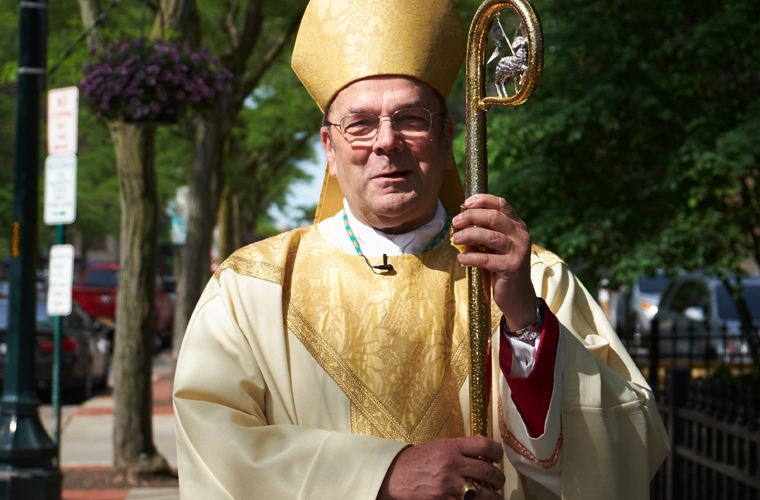“You are My Messenger. In you I place my absolute trust.” These words were addressed to St. Juan Diego by the Blessed Mother, Our Lady of Guadalupe. In the mid-16th century, the indigenous peoples of Mexico were subjugated and the memory of human sacrifice was widespread. Our Blessed Mother appeared to Juan Diego as a pregnant native woman and gave him a mission. She sent him, with miraculous flowers in his cloak, to tell the bishop to build a church where people could receive her Son and her tender maternal care.
The outcome of Juan Diego’s visit to the bishop is well known. When Juan Diego opened his cloak, an image of Our Lady was revealed. The chapel was quickly built and the Church increased its efforts to protect indigenous peoples. By accepting the mission given to him, Juan Diego helped to bring Christ’s love to cultures gripped by lack of respect for the dignity of human life.
The Respect Life Program, sponsored by the United States Conference of Catholic Bishops, started in 1972, begins anew each October — the month set aside as Respect Life Month. You realize, as I do, the numerous assaults on human life. In my pastoral letter on the family, I noted, “Marriage and the modern family are indeed under attack. These time-honored and fundamental institutions are threatened today by a variety of policies and practices . . . sinful actions that do not uphold the sanctity of all human life — contraception, certain reproductive technologies, abortion, and euthanasia, to name a few” (The Role of the Family in the Life of the Church of Syracuse and Beyond). To these actions, we could add disregard for persons with disabilities, as if they are less worthy of life; and support to legalize doctor-assisted suicide, inaccurately claiming it is just another option for end-of-life care and other issues associated with the end of life.
Every person is made in God’s image and likeness and is loved by Him. Nothing can diminish the priceless worth of any human life. Every life is cherished. God creates every person for eternal union with him. Every person is chosen. Moreover, every person is created to be in union with others. We do not walk the path of life and faith as isolated individuals.
From the beginning the human person belonged to a “people” God chose to be His own. We are called to walk in God’s ways and treat each other according to the truth of His immense love for every person. “Our lives are involved with one another, through innumerable interactions they are linked together. No one lives alone. No one sins alone. No one is saved alone. The lives of others continually spill over into mine: in what I think, say, do and achieve. And conversely, my life spills over into that of others: for better and for worse” (Benedict XVI, Spe Salvi, 48).
We are called to be messengers of God’s love, treating one another as cherished and chosen by Him. Like Juan Diego we are called to embrace a daily mission to help others encounter God’s transforming love. Every person is sent. We are personally entrusted with specific ways to love God and care for one another.
“Every Life: Cherished – Chosen – Sent” is the theme for Respect Life Month. We are cherished, chosen, and sent by God to love one another as He loves us. Sadly, violence, in a variety of forms — the most devastating of which are named above — permeate our culture. It is present on our streets, in families and schools, in places where civil discourse should be evident, and even in our Church. Violence, whether in word or deed, violates human dignity and the respect due to every person.
Today when we see the dignity of human life disregarded, how do we respond? During October, we pray that we may show by our words and actions that every human life is cherished and chosen. We pray that each of us will embrace our mission to build a culture of life by being messengers of God’s love.
If you have a prayer intention you would like me to consider during the weeks ahead, please mail it to my attention at 240 E. Onondaga St., Syracuse, N.Y. 13202.





